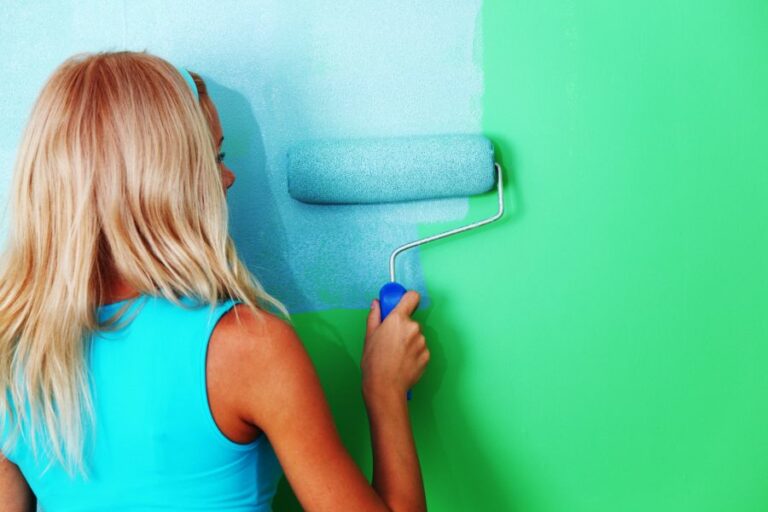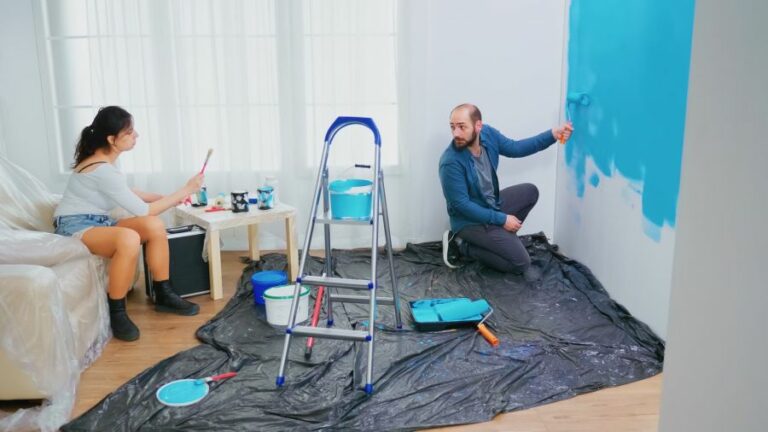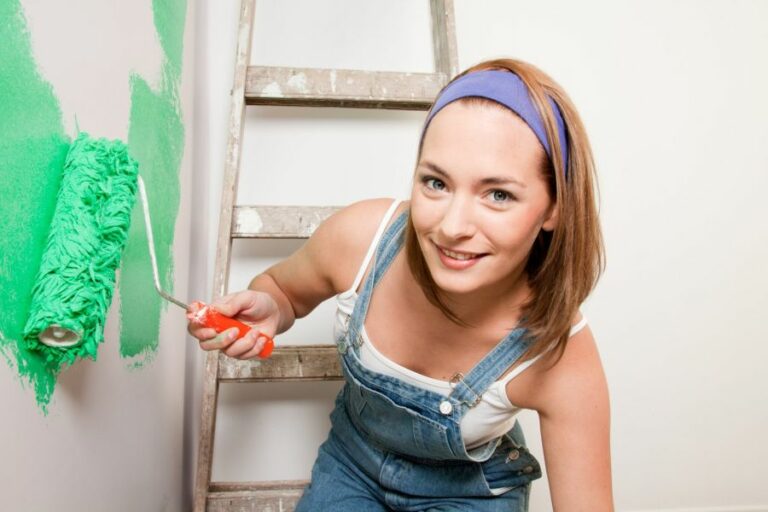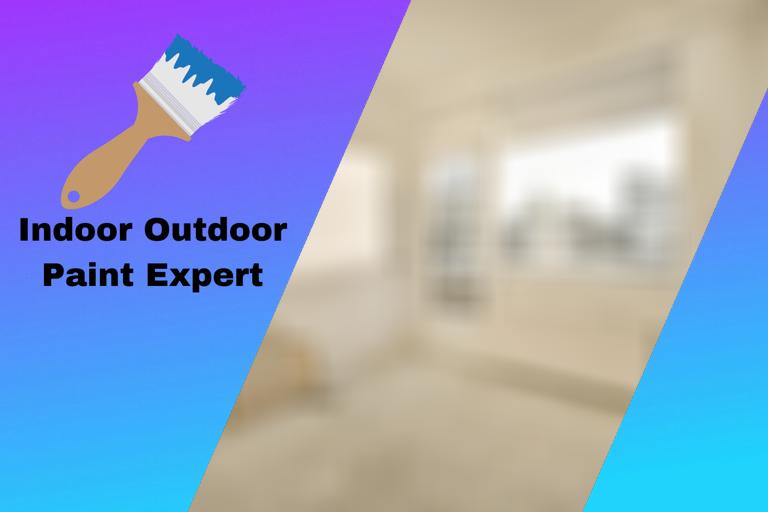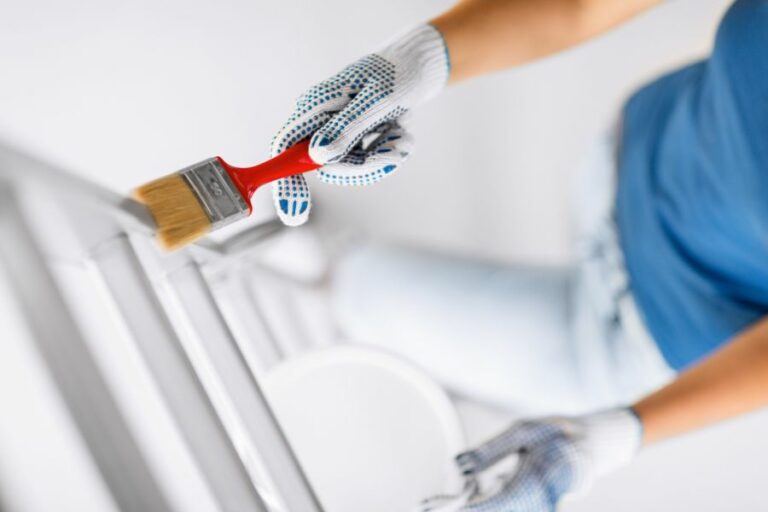Indoor Textured Paint Options, Product-Focused. What Pros Say
Are you looking to transform your living space’s ambiance and add personality to your walls? Look no further! I’m here to discuss various indoor textured paint options that cater to various tastes and styles. Focusing on the best products available in the market, I’ll provide valuable insights into their benefits, use cases, and how these can refresh your interiors.
Indoor textured paint options, product-focused:
Indoor textured paint options include acrylic-based and oil-based paints, with popular products like Behr Premium Plus Texture Paint, Rust-Oleum Stone Creations, Valspar Venetian Plaster, and Homax Wall and Ceiling Textures. Factors to consider when choosing a paint include surface condition, desired finish, application method, and color compatibility. Proper preparation, patience, and following the manufacturer’s instructions are crucial to achieving professional results.

Looking to spruce up your interiors with textured paint? Discover a variety of indoor textured paint options and products that can elevate your home’s aesthetic. Keep reading to uncover popular textures, expert tips, and the ideal products for your next makeover project.
Don’t miss out on transforming your space!
Contents
- 1 Interior Textured Paint Selection: Top Products
- 2 Ideal Interior Paint Textures: A Guide
- 3 Achieve a Textured Look with These Paints
- 4 Optimal Paint Textures for Enhancing Walls
- 5 Discover Wall Paints with Built-in Texture
Interior Textured Paint Selection: Top Products
Textured paint can transform the feel of a room, adding depth and character to your interior design. With a wide variety of products available on the market, choosing the perfect indoor textured paint for your project can be overwhelming.
• Introduction to Textured Paints
Textured paints are designed to create a textured, decorative finish on walls and ceilings. They can mimic the appearance of stucco, stone, or other natural surfaces, adding visual interest and hiding minor imperfections.
– Acrylic Based Textured Paints
Acrylic-based textured paints are water-based and easy to apply. They come in a variety of finishes, including smooth, sand, or popcorn. Acrylic-based textured paints are easy to clean with mild soap and water, making them a popular choice for interior applications.
– Oil-Based Textured Paints
Oil-based textured paints provide a more durable and long-lasting finish compared to acrylic. They are ideal for high-traffic areas or where moisture resistance is required. However, oil-based paints have a stronger odor and require paint thinner for cleanup, making them less environmentally friendly.
• Popular Textured Paint Products
– Behr Premium Plus Texture Paint
Behr Premium Plus Texture Paint is a versatile acrylic paint that can be applied using a roller, brush, or spray. It adds a subtle texture to walls and is available in a wide range of colors.
This product is appropriate for beginner DIYers and is an excellent option for refreshing the look of a room without the need for major renovations.
– Rust-Oleum Stone Creations
Rust-Oleum Stone Creations is an aerosol spray paint that creates a multi-toned, textured stone finish. It can be applied to a variety of surfaces, including drywall and masonry, giving it flexibility for use in different indoor applications.
This product is ideal for small accent areas, such as a fireplace surround or a textured accent wall.
– Valspar Venetian Plaster
Valspar Venetian Plaster is a pre-colored, acrylic plaster that provides a smooth and polished finish. It is tintable to a wide range of colors, allowing for customization to fit your design needs. Venetian plaster is suitable for both walls and ceilings, making it a versatile choice for your textured paint project.
– Homax Wall and Ceiling Textures
Homax offers a range of wall and ceiling texture products in both ready-to-use and mixable powder forms. These products include popcorn, orange peel, and knockdown textures. These options cater to different preferences and skill levels, from beginner DIYers to professional contractors.
Visit the Homax website for more information on their products.
• Choosing the Right Textured Paint
When selecting a textured paint, consider the following factors:
- Surface condition: Assess the surface you plan to paint. Textured paint can help to hide minor imperfections, but it may not cover significant damage or unevenness.
- Desired finish: Determine the type of texture and finish you prefer. Smooth finishes provide a subtle and refined appearance, while more pronounced textures like popcorn or orange peel provide a dramatic, eye-catching effect.
- Application method: Different products are applied using different methods, such as brushing, rolling, or spraying. Consider which method is best suited for your project and skill level, as well as the tools and equipment required.
- Color: Many textured paints can be tinted to match your desired color scheme. Ensure that the product you choose is compatible with your chosen color for a seamless design.
• Application Tips
- Prep your surface: Always clean and repair your walls or ceilings before applying textured paint. Any dirt, grease, or damage on the surface may impact the adhesion and finish of the paint.
- Prime: A primer is recommended, especially for oil-based paints, to ensure proper adhesion and improved durability.
- Test in a small area: Before committing to a particular texture, apply a small test section. This will help you determine if the product and application method meet your desired look.
- Follow the manufacturer’s instructions: Each product will have specific instructions for application, mixing, and drying time. Follow these instructions carefully for the best results.
- Patience and practice: Achieving the perfect texture may require some trial and error, especially for novice painters. Take your time and have the patience to ensure your desired outcome.
Overall, textured paint can add depth and character to your indoor space. With a variety of products available, there is the potential to achieve nearly any desired finish.
Remember to carefully consider factors such as surface condition, finish type, application method, and color compatibility when choosing an indoor textured paint product.
Finally, take the time to properly prepare your surface and follow the manufacturer’s instructions to achieve the most professional results possible.
Ideal Interior Paint Textures: A Guide
Selecting the right paint texture is essential when it comes to interior design, as it can dramatically alter the overall look and feel of a room. With numerous paint textures available, it might be challenging to determine the best one for your space.
• Flat and Matte Finishes
Flat and matte paint finishes are ideal for hiding imperfections on walls, as they do not reflect light. This finish creates a smooth and uniform appearance, making it perfect for bedrooms, living rooms, and hallways. Flat and matte paints also offer an elegant touch to interior walls.
Recommended Use: Bedrooms, living rooms, hallways, and low-traffic areas.
• Eggshell Finish
Eggshell paint finishes have a low sheen and resemble the shell of an egg. This type of paint texture is great for areas that require more frequent cleaning, such as kids’ rooms or hallways.
The eggshell finish is slightly more durable than flat and matte finishes, and it provides a subtle shine to the surface without being overly glossy.
Recommended Use: Kids’ rooms, hallways, family rooms, and other areas with moderate traffic.
• Satin Finish
Satin paint finishes are an excellent choice for areas that require a durable finish and a slight sheen. This type of paint texture is easy to clean, making it suitable for high-traffic areas, and it resists moisture, which makes it ideal for bathrooms, kitchens, and laundry rooms.
The satin finish is not the best choice for imperfect walls, as it can highlight visible imperfections due to its light-reflective properties.
Recommended Use: Kitchens, bathrooms, laundry rooms, and high-traffic areas.
• Semi-Gloss Finish
A semi-gloss paint finish offers a more pronounced shine compared to satin finishes, making it a popular choice for accent walls, trim, and doors.
Semi-gloss paint is stronger and more resistant to moisture, so it is ideal for rooms exposed to humidity or moisture, such as kitchens and bathrooms. This paint texture may also be used for cabinets or furniture.
Recommended Use: Kitchens, bathrooms, accent walls, trim, doors, and cabinets.
• High-Gloss Finish
High-gloss paint finishes provide the most durability and shine among all finishes, making them an excellent choice for surfaces that require frequent cleaning or are exposed to high levels of moisture.
High-gloss finishes are best suited for trim, doors, cabinets, and furniture, and can create a sleek and sophisticated look when applied to accent walls. However, this type of finish tends to highlight imperfections, so it may not be ideal for older walls with visible issues.
Recommended Use: Trim work, doors, cabinets, furniture, and accent walls in contemporary spaces.
• Textured Paints
Textured paints are ideal for adding depth and dimension to a wall, covering imperfections, or creating a unique design element. There are various types of textured paints, such as sand, stone, or metallic finishes, providing many options for personalizing your space.
Textured paints can be used in various rooms, depending on the desired effect and practicality of the texture.
Recommended Use: Accent walls, feature walls, or for covering imperfections on walls.
• Choosing the Right Paint Texture for Your Space
In conclusion, the best paint texture for your interior space depends on the desired appearance, durability, and cleaning requirements. Consider factors such as the use of the room, the condition of the walls, and your personal style when selecting a paint texture.
For additional guidance on choosing the right paint texture for your specific needs, visit the U.S. Department of Energy’s guide to paint types and finishes.
Paint Texture | Advantages | Disadvantages |
|---|---|---|
Flat/Matte | Low sheen, hides imperfections, absorbs light | Shows dirt easily, less washable |
Eggshell | Slightly glossy, more washable, hides imperfections | Not as durable as higher gloss finishes |
Satin | Smooth, satin-like finish, more washable, resists mildew | Imperfections may be more visible |
Semi-Gloss | Reflects light, more washable, resists moisture | Shows imperfections, may not be suitable for all rooms |
Gloss | Highly durable, very washable, reflects light | Shows all imperfections, not suitable for all surfaces |
Achieve a Textured Look with These Paints
A textured look in your paint can add depth and character to your walls or surfaces, giving them a unique and interesting finish. There are various paint products and techniques available to achieve this effect.
• Specialized Textured Paints
Specialized textured paints are formulated with additional materials, such as sand, gypsum, or other additives that create a thicker, more textured consistency. These paints are an excellent choice for adding texture and depth to your walls, ceilings or other surfaces.
– Sand Textured Paint
Sand-textured paint contains small sand particles that give it a slightly rough and gritty appearance. It is ideal for covering imperfections on surfaces, adding visual interest, and creating a slip-resistant finish on floors.
This Old House offers a detailed tutorial on how to use sand-textured paint for a visually appealing finish.
– Venetian Plaster
Venetian plaster is a mixture of slaked lime, marble dust, and pigments, which gives a smooth, polished finish with the appearance of natural stone. It is a popular choice for a luxurious, high-end look.
The Family Handyman provides a step-by-step guide on how to apply Venetian plaster to achieve a stunning, polished finish.
– Knockdown Texture
Knockdown texture paint is thicker than regular paint and is typically applied using a trowel or spray gun. It dries to a rough, uneven finish that resembles stucco, hiding imperfections and adding dimension to your space.
A tutorial from BobVila.com will help you achieve this unique texture using a trowel or a spray gun.
• Textured Rollers and Additives
Another option for creating textured surfaces is using textured rollers or additives that can be mixed with regular paint. These methods offer versatility and ease of application while achieving a textured finish.
– Textured Rollers
Textured paint rollers are available in various patterns and designs, allowing you to create different textures and styles on your walls. Simply apply your chosen paint with a specialized roller to achieve the desired effect.
Watch this video tutorial to learn how to use a textured roller effectively.
– Paint Additives
Textured paint additives, such as sand or polymeric particles, can be mixed into any regular paint to create a textured finish. Mix the additive according to the manufacturer’s instructions and apply with a brush, roller, or spray gun.
Refer to this guide for more information on using paint additives for creating textured surfaces.
• Faux Painting Techniques
Faux painting techniques can also be used to create texture and depth on your surfaces. These techniques involve using regular paint and simple tools to mimic the appearance of various textures, such as stone, wood, or fabric.
– Sponging
Sponging is a popular faux painting technique that involves applying multiple layers of paint using a sponge. This method creates a mottled, textured finish that adds depth and dimension to your space.
Follow this tutorial to learn how to create a sponged look on your walls.
– Rag Rolling
Rag rolling is another faux painting technique that involves applying paint with a rag and creating a patterned, textured surface. This method is ideal for creating an aged and weathered look.
Take a look at this tutorial to learn the basics of the rag-rolling technique.
• Recommendations for Textured Paint Applications
- Practice your chosen technique on a separate surface or small, inconspicuous area before applying it to the entire surface. This will help you perfect your technique and ensure the desired result.
- Choose the right paint and tools for the job. Specialized textured paints, textured rollers, and paint additives are designed for specific outcomes. Make sure to follow the manufacturer’s instructions for optimal results.
- Apply textured paint in well-ventilated, controlled environments. Drying times and the final appearance of the texture may be affected by humidity and temperature.
- Complete your project with a proper sealer or protective layer. This will prolong the lifespan of your textured finish.
In conclusion, there is a multitude of options available for achieving a textured look on your surfaces. Specialized paints, rollers, paint additives, and faux painting techniques can all be used to create depth and interest in your space.
By choosing the appropriate method and following the proper application techniques, you can successfully achieve the desired textured finish.
Optimal Paint Textures for Enhancing Walls
Painting textured walls can be challenging, especially when it comes to choosing the perfect paint texture to enhance and complement the existing surface texture.
• Understanding Paint Textures
Paint texture refers to the thickness and appearance of the paint when applied to a surface. There are various types of paint textures available in the market, ranging from smooth to highly textured. For textured walls, the selection of the right paint texture is essential to maintain the desired visual effect and complement the surface characteristics.
– Smooth Paint
Smooth paint is an ideal choice for walls with a subtle texture. It offers good coverage, can be easily applied, and allows the existing texture to show through. Examples of subtle textures include orange-peel and light knockdown textures.
Smooth paint is typically available in both matte and satin finishes, providing further options for achieving the desired aesthetic. Recommended brands for smooth paint include Sherwin-Williams and Benjamin Moore.
– Heavy-Bodied Paint
Heavy-bodied paint is thicker and more viscous than smooth paint, resulting in a more pronounced texture when applied to a surface.
This type of paint is recommended for walls with medium to heavy textures, such as stucco, knockdown, and popcorn finishes.
The thick consistency of the paint helps to enhance and accentuate the textured effect of the wall while maintaining even coverage. Brands that offer heavy-bodied paint options include Behr Elastomeric Masonry, Stucco & Brick Paint_ and [float: right] Valspar Signature*.
– Acrylic Texture Paint
Acrylic texture paint is specially formulated to provide an additional layer of medium to heavy texture directly onto the wall surface. This paint is a great option for walls with an existing texture that needs enhancement or repair.
It can be applied by brush, roller, or trowel and can be manipulated to achieve the desired textured appearance. Examples of acrylic texture paints include Dulux Texture Effects and Homax Roll-On Texture.
• Expert Tips for Painting Textured Walls
– Proper Surface Preparation
Regardless of the paint texture chosen, proper surface preparation is crucial for achieving the desired outcome. This includes cleaning the walls to remove dust and dirt, as well as repairing any cracks or holes that may be present.
An appropriate primer should also be applied to ensure an even and long-lasting finish. For textured walls, choose a primer that is specifically designed for textured surfaces, such as Kilz PVA Drywall Primer or Zinsser Bulls Eye 1-2-3 Primer.
– Correct Application Techniques
Using the proper application techniques for the chosen paint texture is crucial to achieving a professional-looking result. For smooth paint, a high-quality roller with a short nap (1/4 to 3/8 inch) is recommended to ensure an even application.
For heavier textures, a roller with a longer nap (1/2 to 3/4 inch) will provide better coverage and texture enhancement.
When applying acrylic texture paint or textured paint additives, it is essential to follow the manufacturer’s instructions and use the recommended tools (brush, roller, or trowel) for the best results.
– Proper Drying and Curing Time
To achieve a durable and long-lasting finish, it is essential to allow adequate drying and curing time between coats and before handling or placing furniture against the painted surface.
Drying time may vary depending on the type of paint, the application method, and the ambient conditions; however, a general guideline is to wait at least 24 hours before applying a second coat and at least 72 hours before placing furniture against the wall.
Refer to the paint manufacturer’s instructions for specific drying and curing times.
• Conclusion
In conclusion, the best paint texture for textured walls depends on the existing surface texture and the desired aesthetic effect. Smooth paint is suitable for subtly textured walls, while heavy-bodied paint and acrylic texture paint are ideal for medium to heavily textured surfaces.
By following expert tips and recommendations for surface preparation, application techniques, and proper drying and curing times, a professional and visually appealing result can be achieved on textured walls.
Discover Wall Paints with Built-in Texture
Discovering the perfect paint for your walls involves a combination of aesthetics, durability, and functionality. One essential factor to consider when searching for wall paint options is texture.
• Exploring Textured Wall Paint Options
Textured paints are specially formulated paints that can create unique surface patterns, raised effects, or visually appealing impressions. These paints contain specific additives that give them texture, such as sand, microspheres, or other granular substances.
The following are some popular types of textured wall paint available in the market:
– Sand-Textured Paint
Sand-textured paint contains fine sand particles that create a lightly textured, grainy surface when applied to walls. This paint type is an ideal choice for hiding minor imperfections or rough surfaces. It adds depth to flat walls and enhances the overall visual appeal of a space.
– Popcorn Textured Paint
Popcorn textured paint consists of encapsulated polystyrene beads that produce a uniform, bumpy surface on walls. It is widely popular for ceiling surfaces and can effectively minimize noise while obscuring existing flaws.
– Venetian Plaster Paint
Inspired by historic Italian plasterwork, Venetian plaster paint creates an elegant, smooth, and glossy finish, resembling polished marble or limestone. This paint involves a multi-layered application process, resulting in an eye-catching, seamless texture that adds a touch of luxury and sophistication to walls.
• Choosing the Right Textured Paint for Your Walls
Selecting the most suitable textured paint for your walls involves considering factors such as surface condition, desired visual effect, and room ambiance. Here are some recommendations based on specific requirements:
– Hiding Imperfections
If your main objective is to conceal minor flaws and uneven surfaces, sand-textured paint is an excellent choice. Its granular finish can help cover cracks, patches, or small holes, resulting in a more polished, uniform appearance.
– Creating a Cozy Atmosphere
For spaces that require a more intimate, cozy ambiance – such as a living room or bedroom – popcorn textured paint may be the ideal option. The unique bumpy surface can help reduce noise pollution while providing a warm, inviting look.
– Achieving an Elegant Finish
For those seeking a high-end, luxurious feel, Venetian plaster textured paint is an outstanding option. Its glossy, polished appearance adds a sophisticated aesthetic to your walls, making it suitable for upscale spaces such as living rooms, dining areas, or master suites.
• Application Techniques for Textured Paint
Textured paint application may seem intimidating, but with the right tools and techniques, it is achievable for both DIY enthusiasts and professional painters alike. Here are some tips on achieving the desired effect with your chosen textured paint:
– Roller Application
This method works best for sand and popcorn-textured paints. Select a paint roller with a thick nap to ensure sufficient texture buildup. Apply the paint generously, maintaining a consistent pattern across the wall.
– Trowel Application
The trowel application technique is ideal for creating a Venetian plaster effect. Using a stainless steel trowel, apply thin layers of the paint in crisscross strokes, gradually building up to the desired texture. When the final coat is partially dry, buff the surface lightly to reveal the polish and shine.
• Additional Resources
To learn more about textured wall paint and its applications, the Paint Quality Institute (https://www.paintquality.com) provides extensive resources, including articles, videos, and expert advice on paint types and techniques.
In conclusion, textured wall paint is an excellent option for those looking to enhance the visual appeal of their space, hide imperfections, or create a cozy atmosphere.
With various options and easy application techniques, textured paint can transform your walls and achieve the desired ambiance for your home or office.

